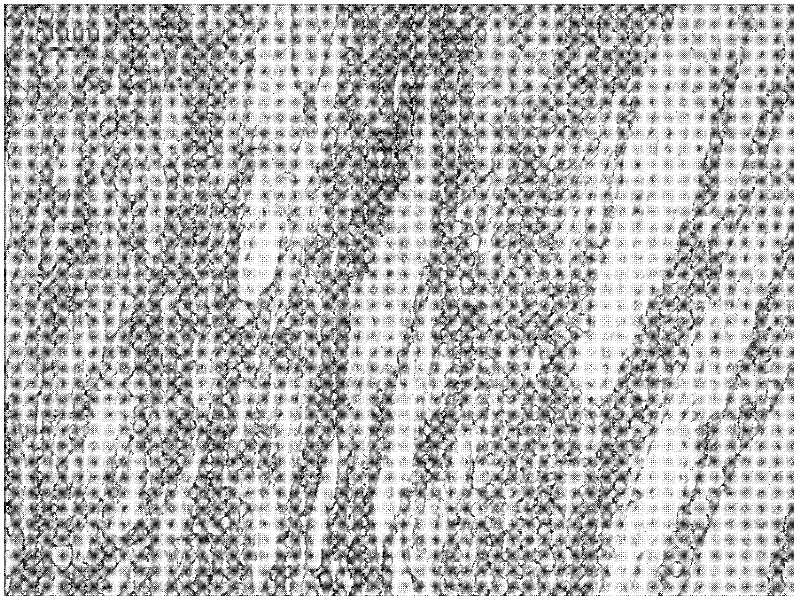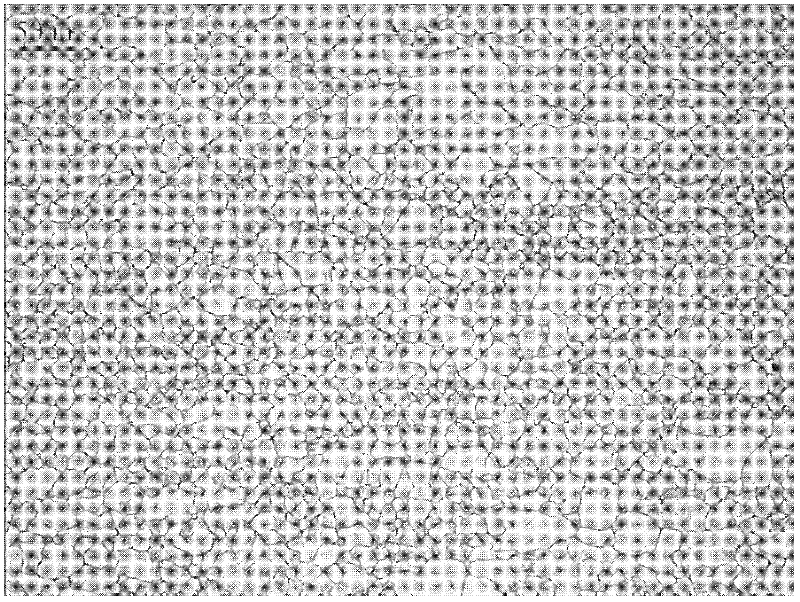Method for displaying thermal deformation texture of steel used for nuclear power pressure container
A technology of pressure vessel and display method, applied in the field of display of thermal deformation structure of steel for nuclear power pressure vessel, can solve problems such as difficult display, and achieve the effect of clear and complete grains and optimized thermal deformation process
- Summary
- Abstract
- Description
- Claims
- Application Information
AI Technical Summary
Problems solved by technology
Method used
Image
Examples
Embodiment 1
[0028] 1. Preparation of Thermally Deformed Samples
[0029] a) Machining of the sample: the nuclear power pressure vessel is machined into a small cylinder with a diameter of 8mm and a height of 15mm, the surface is polished, and the surface finish is at above.
[0030] b) Thermal deformation process: The cylindrical sample is thermally compressed and deformed on a thermal simulator. The deformation temperature is 900°C, the strain rate is 0.1 / s, and the strain is 70% (the corresponding true strain is 1.2). Immediately after the deformation Samples were removed and quenched into water.
[0031] c) Cutting and inlaying of metallographic samples: use wire electric discharge cutting to divide the hot-deformed and quenched cake-shaped sample into two along the direction of the central axis, and take the central longitudinal section of the thermally-deformed sample as the metallographic observation surface for inlaying , in preparation for subsequent metallographic sample prepa...
Embodiment 2
[0044] The difference from Example 1 is:
[0045] 1. Preparation of Thermally Deformed Samples
[0046] a) Machining of the sample: the nuclear power pressure vessel is machined into a small cylinder with a diameter of 8mm and a height of 15mm, the surface is polished, and the surface finish is at above.
[0047] b) Thermal deformation process: The cylindrical sample is thermally compressed and deformed on a thermal simulator. The deformation temperature is 1000°C, the strain rate is 10 / s, and the strain is 70% (the corresponding true strain is 1.2). Samples were removed and quenched into water.
[0048] c) Cutting and inlaying of metallographic samples: use wire electric discharge cutting to divide the hot-deformed and quenched cake-shaped sample into two along the direction of the central axis, and take the central longitudinal section of the thermally-deformed sample as the metallographic observation surface for inlaying , in preparation for subsequent metallographic sa...
Embodiment 3
[0059] The difference from Example 1 is:
[0060] 1. Preparation of Thermally Deformed Samples
[0061] a) Machining of the sample: the nuclear power pressure vessel is machined into a small cylinder with a diameter of 8mm and a height of 15mm, the surface is polished, and the surface finish is at above.
[0062] b) Thermal deformation process: The cylindrical sample is thermally compressed and deformed on a thermal simulator. The deformation temperature is 1100°C, the strain rate is 10 / s, and the strain is 70% (the corresponding true strain is 1.2). Immediately after the deformation Samples were removed and quenched into water.
[0063] c) Cutting and inlaying of metallographic samples: use wire electric discharge cutting to divide the hot-deformed and quenched cake-shaped sample into two along the direction of the central axis, and take the central longitudinal section of the thermally-deformed sample as the metallographic observation surface for inlaying , in preparatio...
PUM
 Login to View More
Login to View More Abstract
Description
Claims
Application Information
 Login to View More
Login to View More - R&D
- Intellectual Property
- Life Sciences
- Materials
- Tech Scout
- Unparalleled Data Quality
- Higher Quality Content
- 60% Fewer Hallucinations
Browse by: Latest US Patents, China's latest patents, Technical Efficacy Thesaurus, Application Domain, Technology Topic, Popular Technical Reports.
© 2025 PatSnap. All rights reserved.Legal|Privacy policy|Modern Slavery Act Transparency Statement|Sitemap|About US| Contact US: help@patsnap.com



